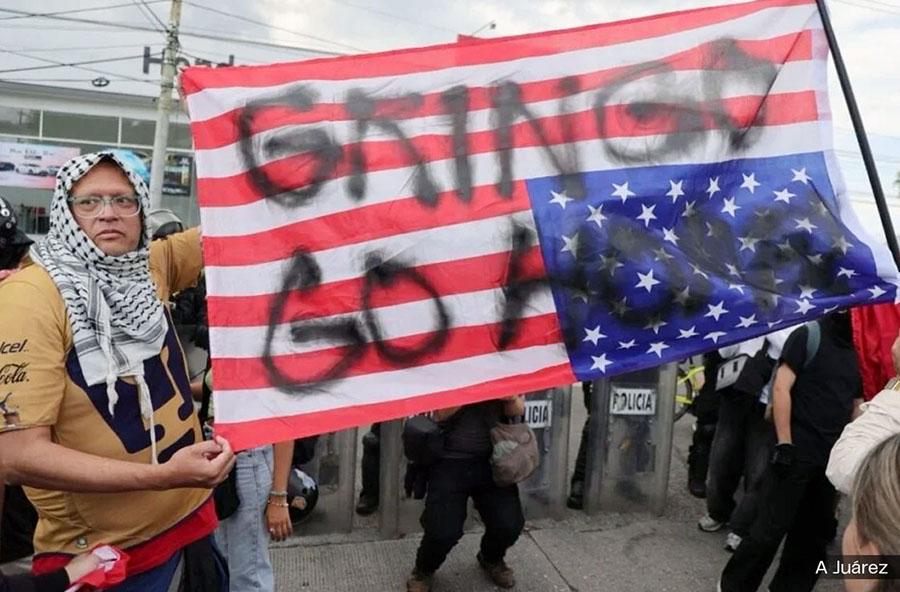
Comandante Antonio García
A large part of public opinion was astonished at the beginning of July when the first march against gentrification was convened and carried out in Mexico City, the astonishment is partly because the majority of the population had never heard such a term before, much less knew its meaning. although they are largely affected by this phenomenon.
With slogans such as: “Gringo go home”, “Here we speak Spanish”, “Dignified housing for Mexicans” or “Your comfort gentrifies, our struggle dignifies”, the demonstrators advanced towards the Paseo de la Reforma. This was a march called by the Lindbergh Forum of the Condesa neighborhood, one of the most affected by this social phenomenon. As they passed, the demonstrators expressed their rage, which they unleashed against commercial establishments and large financial capital with a presence in the city.
Gentrification refers to an urban process where traditionally popular neighborhoods experience the arrival of new inhabitants, most often from Europe or the United States with high purchasing power. This phenomenon is usually accompanied by investments in infrastructure, improvements in services, an increase in the value of properties and therefore an increase in the cost of living for residents. By formidably increasing the prices of housing, rents, services, food and transportation, among others, this causes the displacement of original families, who cannot afford the increase in rents and the general increase in the cost of living.
These displacements occur after a process of preparation, basically because when a territory has tourist attractions, or simply has some value for investment, it can be coveted by tourists who visit it or by investors to inhabit, rent or buy a property. To do this, they resort to financial strategies and pressures to get hold of most of the homes, with this they force residents to move to peripheral neighborhoods or to other cities or towns, thus generating and deepening all kinds of exclusion and social asymmetries. In general, the neighbourhoods in which the displaced settle are peripheral to urban centres and do not have basic public services or are not planned.
According to the opinion of experts on the subject, they warn that the phenomenon contributes to urban segmentation and inequality, which in Colombia is known as stratification. While privileged sectors have access to better services, availability and access to entertainment and leisure alternatives, others, the vulnerable and impoverished sectors see their possibilities of remaining in the area limited. Therefore, gentrification in the Mexican capital means a profound change both in the physical configuration and in the daily life of its inhabitants, uprooting, loss of cultural and social identity, and rupture in the social fabric of settlers who have historically inhabited a territory, have related to it and their fellow citizens and have built community from uses, ancestral customs and knowledge that has allowed them to adapt to the environment in which they live.
Gentrification goes hand in hand with the discourse of development, since under the promise of modernization of infrastructure, improvement in services, quality of life, the supply of housing aimed at international tourism and the proliferation of exclusive commercial spaces, an idea of collaborative economy is created, which has as its purpose the formation of a social economy, but in the end it ends up in for-profit business models, so for example digital platforms such as Airbnb are created.
This platform is in charge of acquiring properties at a lower price, modifying them and then renting them to users who mostly come from abroad, their rental is made according to the rates that the same platform determines and can be for days or months, which causes the rentier value to increase exorbitantly. This action has an impact on the displacement of tenants who used to rent an apartment for long stays in preference for tourists who stay by the night; as a result, a problem of housing shortage is caused for the historic inhabitants.
Neoliberal governments have strongly promoted this idea of business and the organization of cities tailored to the needs of capital reproduction, however, governments that call themselves progressive, as in the case of Colombia, have also been strongly encouraging tourism and the consolidation of rental platforms with the purpose of promoting tourism. which has caused serious impacts on entire communities in large cities and places of interest to these capitalists, in this sense, it is to be expected that indignation will grow and new scenarios of struggle will be incubated in our peoples by communities that resist being displaced from their territories because of the interests of big capital.
This phenomenon has many coincidences with the extractivist economy; a discourse that promises prosperity and wealth for all, legislative and land-use changes and finally produces displacement of local communities, to hand over the territories to international capital on a silver platter.
Source: https://eln-voces.net/2025/07/28/gentrificacion-otra-cara-del-despojo/